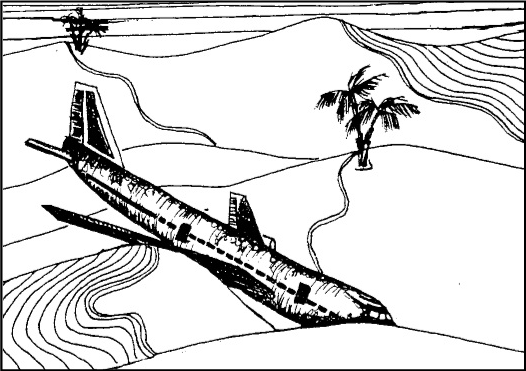| << Chapter < Page | Chapter >> Page > |
ECONOMIC AND MANAGEMENT SCIENCES
Grade 4
HOW PEOPLE MAKE A LIVING
Module 1
ESSENTIAL NEEDS AND LUXURIES

Activity 1
To draw up a list of essential things to survive [LO 1.1]
While travelling over North Africa the aeroplane in which you are develops engine trouble. The pilot makes an emergency landing and the aeroplane comes to a standstill against a high dune in die Sahara Desert. Nobody is seriously injured, but the passengers and the flight crew immediately realise that it is necessary to plan the use of their supplies carefully to ensure their survival.
Activity 2
To identify luxuries [LO 1.1]
The things you have considered are things you will need to survive from day to day. These are our essential needs , but they only form a small part of all the things we might buy from day to day. If your mother allowed you to go to the local supermarket with R200 in pocket money, your interests would be very different.
This list includes examples of luxury items. Luxuries are articles that you do not need for survival. They are things that are nice to have and give you the pleasure of feeling spoilt.
Activity 3
To become aware of the difference between essentials and luxuries [LO 1.1]
(c) List the articles below according to the table:
running shoes
wristwatch
1 litre of milk
toothbrush
thick-soled sandals
golden earrings
headache tablets
skateboard
shampoo
cardigan
house
new car
water
sweets
swimming pool
| Essential needs | Luxuries |
| 1. | 1. |
| 2. | 2. |
| 3. | 3. |
| 4. | 4. |
| 5. | 5. |
| 6. | 6. |
| 7. | 7. |
| 8. | 8. |
| 9. | 9. |
| 10. | 10. |
| 11. | 11. |
| 12. | 12. |
(d) Group work.
You participate in sport after school and you have R5 to spend at the tuck shop after the practice session. You have a choice of the following:
fruit juice R2,50
ice cream R4,50
a packet of sweets R2,00
potato chips R2,50
2 suckers R1,00
3 cookies R1,00
What would you choose?
Are the items you chose an essential need? Could you survive without them?
Do you think people would be satisfied if only their essential needs were met every day? Why do you say this?
Activity 4
To identify essential articles for daily use [LO 1.1]

The needs of all people are not the same. The Khoi and the San people lived under conditions that were different from those of modern people. With a friend make a list of the basic needs of a Khoi or San family.
Assessment
LEARNING OUTCOME 1: THE ECONOMIC CYCLE
The learner will be able to demonstrate knowledge and understanding of the economic cycle within the context of “the economic problem”.
Assessment Standard
We know this when the learner:
1.1 describes the roles of members of households as consumers and producers in the “need satisfaction” process.
Memorandum
Page 1
(a) Based on a sketch in which an emergency situation is depicted, learners must be able to distinguish between essential needs and luxuries.
Page 2
(b) A familiar situation is used to illustrate that people strive towards satisfying far more than basic needs only.
Page 3
Page 4
(d) Learners identify the essential articles in their everyday existence.
Page 4
(e) Draw a comparison between what we regard as basic needs and the basic needs of the Khoina.

Notification Switch
Would you like to follow the 'Economic and management sciences grade 4' conversation and receive update notifications?